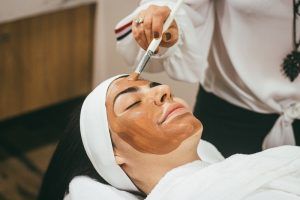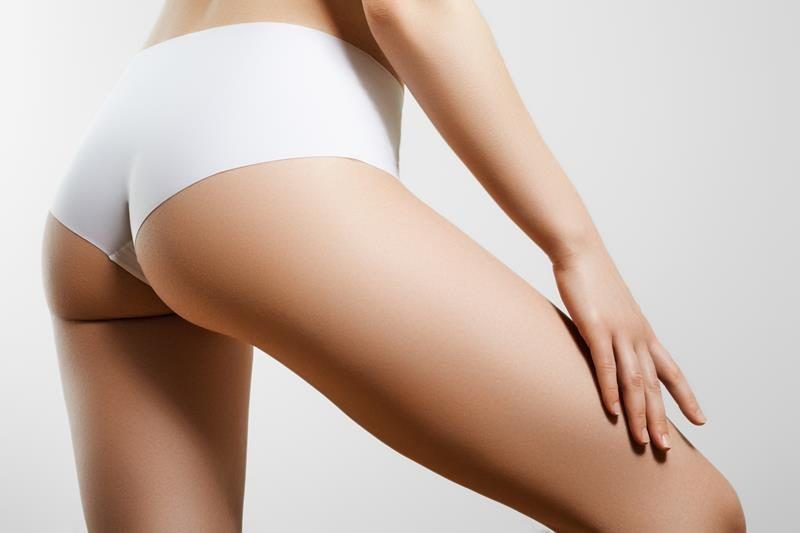Maintenance Chemical Peels: Importance Of Getting Quarterly Or Annual Chemical Peels
 Perfect, flawless, and smooth skin is everyone’s dream, and we are constantly searching for the best skin care products to achieve that. You may achieve the skin of your dreams with chemical peels. We recommend chemical peels to improve the signs of aging and for an even, smooth skin tone with a youthful look.
Perfect, flawless, and smooth skin is everyone’s dream, and we are constantly searching for the best skin care products to achieve that. You may achieve the skin of your dreams with chemical peels. We recommend chemical peels to improve the signs of aging and for an even, smooth skin tone with a youthful look.
A chemical peel , also known as chemexfoliation or derma peeling, is a safe and transformative treatment widely used to improve the tone and texture of the skin in your face, neck, hands, and decolletage (upper chest).
In this procedure, a dermatologist applies a chemical solution to the skin to remove the top layers of the skin to restore and reveal a smoother, more youthful glow to the skin. This may help improve common skin issues like wrinkles, hyperpigmentation, acne, and uneven skin texture.
How Often You Should Get a Chemical Peel
Chemical peels can be used as part of your skincare routine. Generally, you can get a chemical peel once every four to six weeks (a light peel) to maintain a healthy, even, and smooth skin tone. A medium peel can be spaced for three to four months since they exfoliate deeper layers of the skin, while deep peels are best done once every two to three years because they exfoliate most of the epidermis.
Chemical peels have different depth lengths, and the frequency or timing depends on the peel you are using, desired results, and the concerns you want to address.
Types of Chemical Peels
The skin contains three layers; the epidermis (top layer), dermis (middle layer), and subcutaneous fat (bottom layer). Chemical peels are customized treatments that involve safe and careful skin exfoliation using an acid solution that is naturally derived and gentle on the skin. The process removes dead skin cells and helps brighten your complexion, reducing visible signs of aging. Different types of chemical peels fall into these three categories:
Light Or Superficial Chemical Peel
This type of skin peel uses mild acids such as Alpha-Hydroxy AHA) and Beta-Hydroxy (BHA) to gently exfoliate the outermost layer of the skin (stratum corneum). Glycolic acid is one of the most common types of AHA and can be applied to the skin without anesthesia or sedation. This peel is suitable for all skin types and tones. A beta hydroxy acid (BHA) contains salicylic acid; it is lipid soluble and is ideal for oily or acne-prone skin.
Medium Depth Chemical Peel
This peel penetrates deeper into all five layers of the epidermis. It is used to treat wrinkles, age spots, and fine lines. This peel commonly uses lactic, salicylic (fruit acid), glycolic, or trichloroacetic acid (TCA).
Deep Chemical Peel
This is the most intense type of chemical peel. It penetrates the deeper layers of your skin and treats more serious skin issues like acne, severe sun damage, significant hyperpigmentation, precancerous growth, deep lines, and wrinkles. It has a higher concentration of acids such as phenol, glycolic and trichloroacetic (TCA).
How To You Prepare for A Chemical Peel
You will first consult your skin care specialist to determine the best treatment option. They will give you details about the specific peel suitable for you and ask questions that may include if you scar easily or have taken acne medication. Before the chemical peel, you should ensure:
- That you inform your skin care specialist about any medication you use.
- Not to have been on Accutane for at least six months.
- Use plenty of sunscreen leading to your peel.
- Not to use any product with retinol-A for at least 48 hours.
Your skin care specialist may also recommend some changes, which include:
- Not to use facial exfoliants and scrubs a week before the chemical peel.
- Stop epilating, waxing or using depilatory hair removal products the week before the procedure.
- Peel areas must be free of any open sores, lesions or skin infections.
- To take an antiviral medication if you have a history of cold sores and fever blisters to prevent a breakout around the mouth.
- Avoid tanning and direct sun exposure for two weeks before treatment.
- To use special lotions like glycolic acid lotion to improve treatment.
- For medium or deep chemical peels that require sedation, you will be requested to arrange a ride home.
What Is the Procedure of a Chemical Peel?
A chemical peel is typically an in-clinic treatment. Before the procedure, you will likely be asked to tie your hair, your skin will be cleaned to remove any impurities, and eye protection such as gauze or goggles may be applied. Different chemical peels have varying procedures, which include:
Light or superficial chemical peel
A cotton ball brush or gauze will be used to apply a chemical solution in the area being treated. Once it is completed, the chemical solution will be removed, and a neutralizing solution may be applied.
Medium Chemical Peel
During this procedure, your doctor will use a special sponge, cotton-tipped applicator or gauze to apply the chemical solution to your skin. This may contain glycolic or trichloroacetic acid (TCA). A blue color known as the blue peel may be added to the acid, and a cool compress will also be applied to the skin. You might be given a hand-held fan to cool your skin.
Deep Chemical Peel
The procedure will be done in portions to limit the skin’s exposure to the acid. You will be given an IV and sedated, and your heart rate will be monitored. The doctor will use a cotton-tipped applicator to apply the chemical solution, which will turn your skin grey or white. After 15 minutes, it is removed.
The Recovery Process
You may need to apply a protective ointment and wear sunscreen as your skin heals. The recovery process and healing period for each type are as follows;
Light peel
You may resume your regular skin care activities like cleansing, moisturizing, and makeup after a few days. It will probably take 1 to 7 days for your skin to heal fully. Apply lotion or cream as directed until your skin heals.
Medium peels
- You will be required to take antiviral medication for 10 to 14 days
- Perform daily soaks as directed by your doctor
- Don’t expose your skin to sunlight until you are fully healed
- Apply ointment or lotion daily
- The recovery period is between 10 to 14 days.
Additional medium-depth chemical peels may be repeated at 6 to 12 months intervals if needed.
Deep peel
- Take an antiviral medication for 10 to 14 days
- Perform daily soaks as directed
- Avoid sun exposure for 3 to 6 months
- Wait for two weeks before using makeup
- It may take 14 days for your skin to start growing
- You can only have one deep peel performed on your face
Follow your doctor’s instructions for the best results.
Benefits of a Chemical Peel
Chemical peels can improve and treat common skin issues, including and not limited to:
Skin’s Texture Improvement
These treatments help improve the skin texture and tame acne, and tone down hyperpigmentation. You will have dewy, smooth skin as a result.
Reduce Signs of Aging
Chemical peels can help reduce age spots, wrinkles, fine lines, uneven skin tone, roughness and dryness, and liver spots.
Precancerous Growths
Rough skin patches known as Actinic keratosis, which are caused by years of sun exposure, can be removed through chemical peels and decrease your risk of skin cancer.
Rosacea or Acne Rosacea
This condition causes redness, swelling, and red bumps. Chemical peels can help relieve symptoms of mild or moderate rosacea.
Acne
This is a common inflammatory skin condition. A chemical peel can decrease oil production, kill bacteria and improve inflammation. Chemical peels can also eliminate acne scars.
Incorporating chemical peels into your skincare routine can greatly improve your health and rejuvenate your skin, making you glow and look younger.
Contact Ciao Bella Medical Center and Spa today for more information about how we can help.










